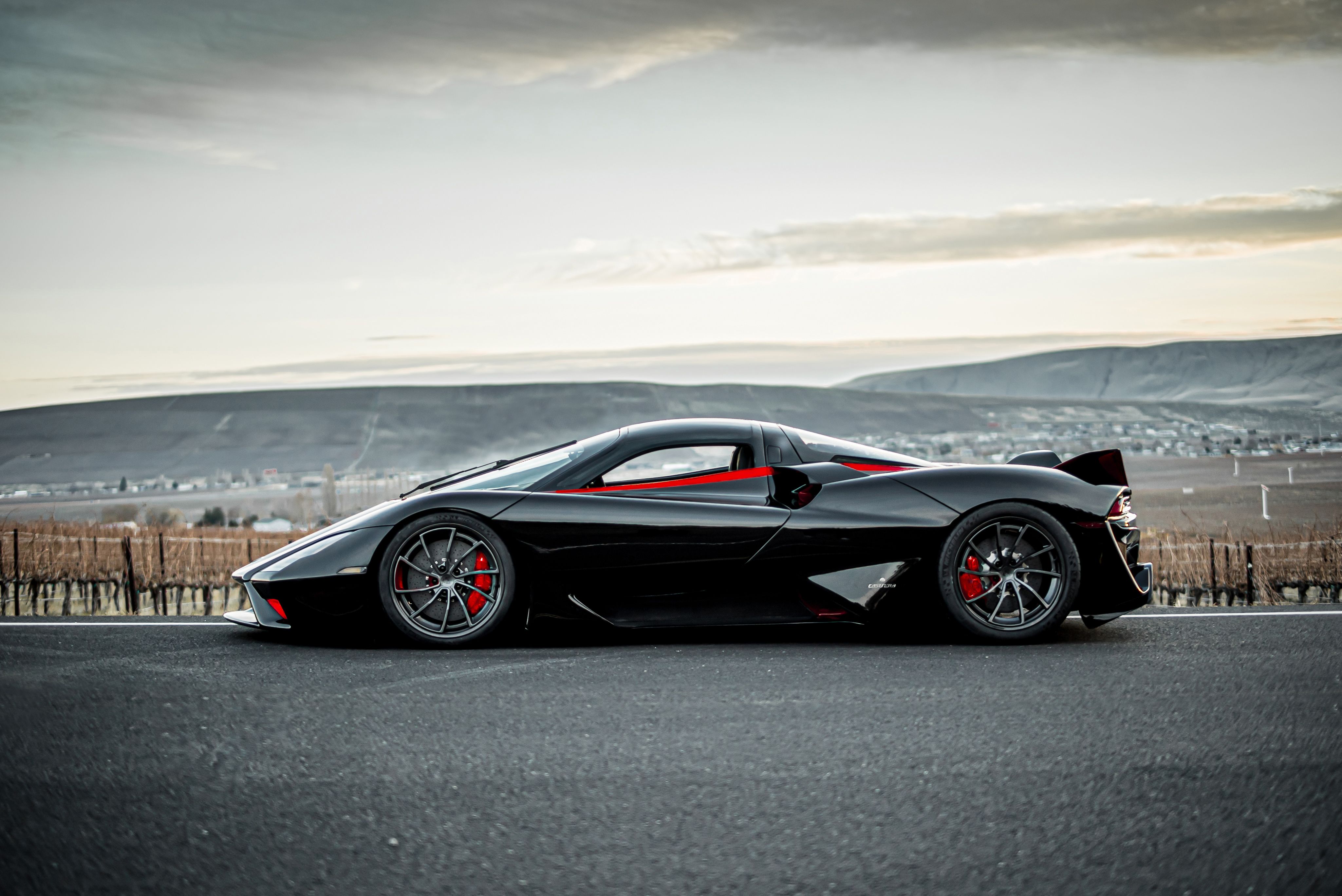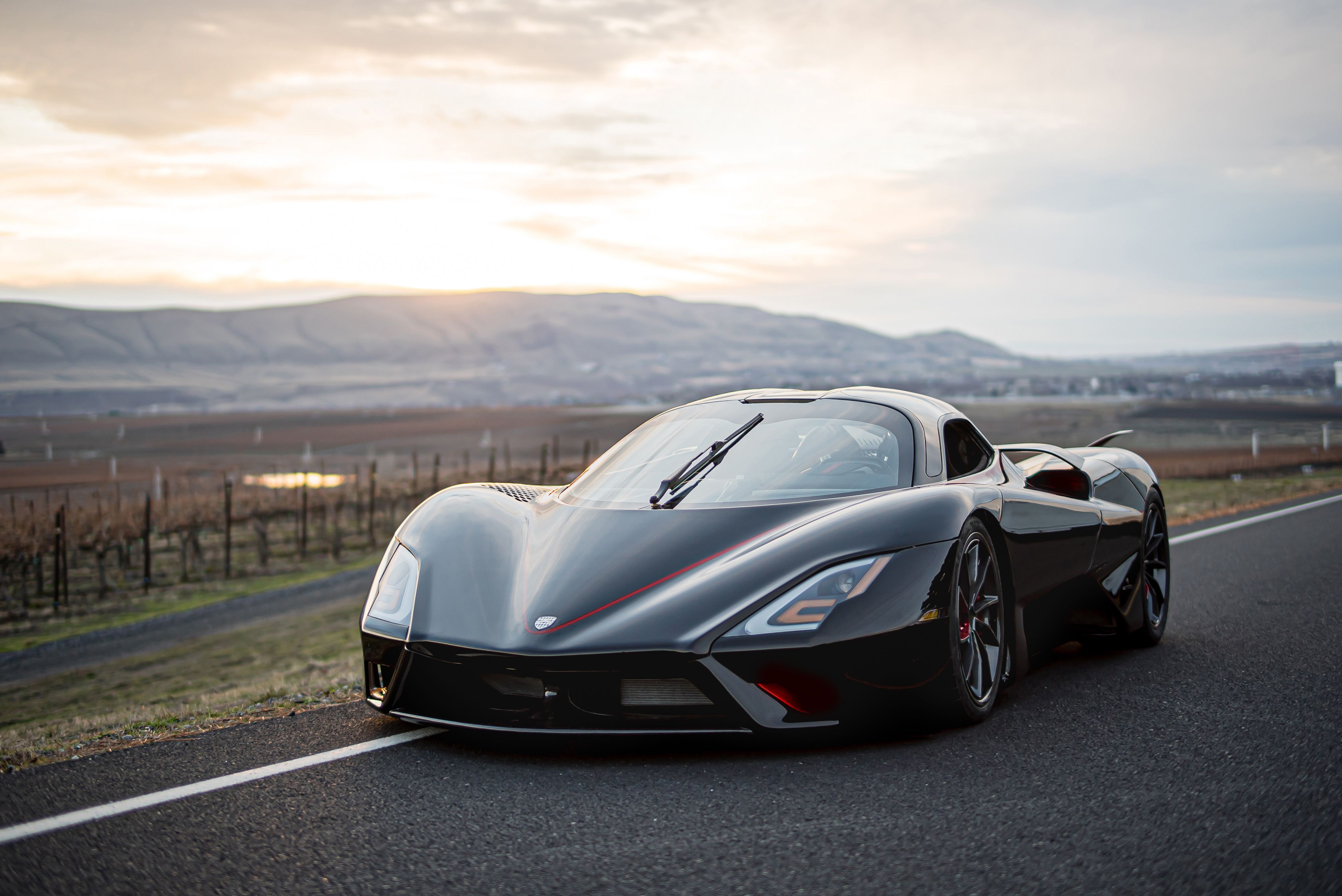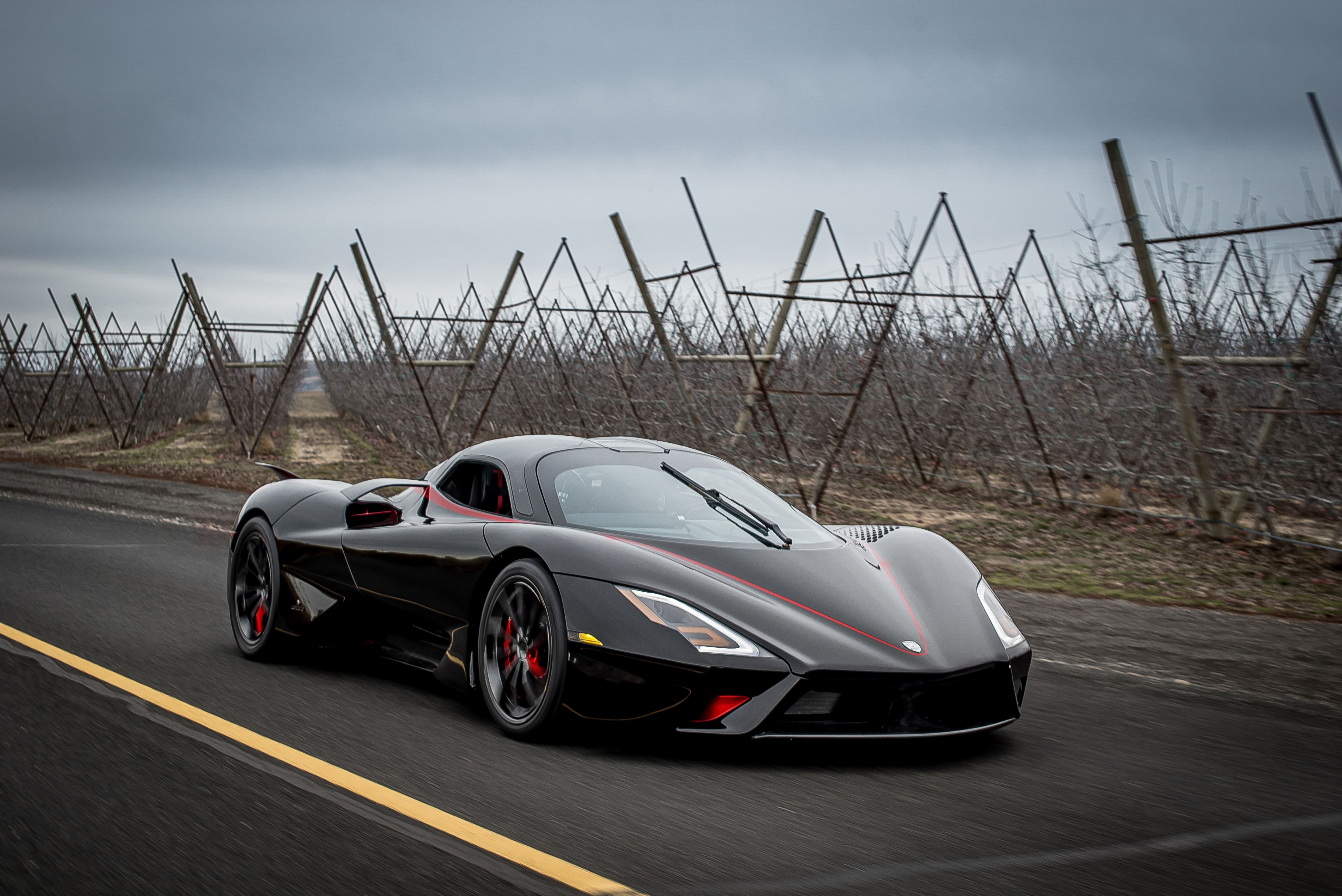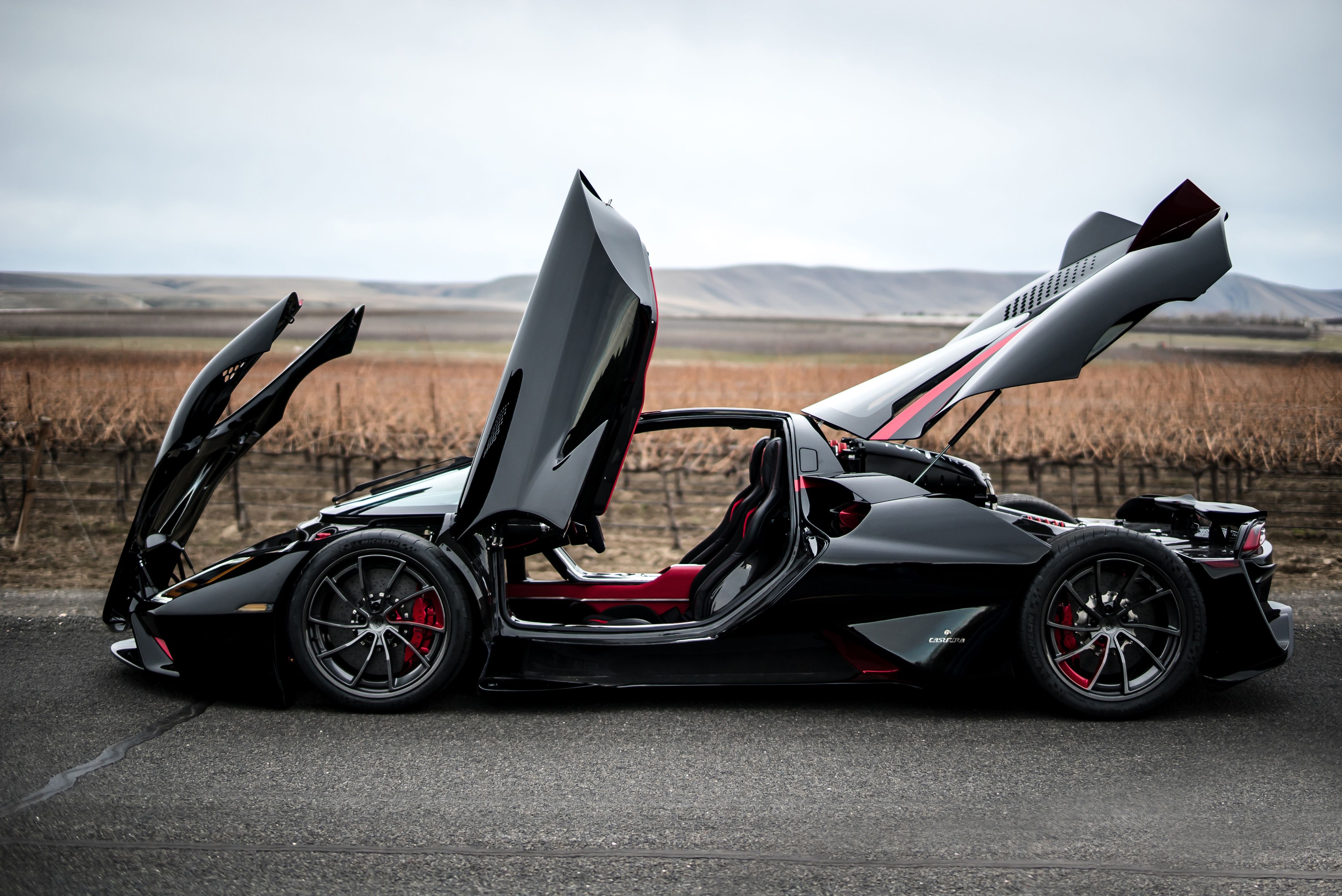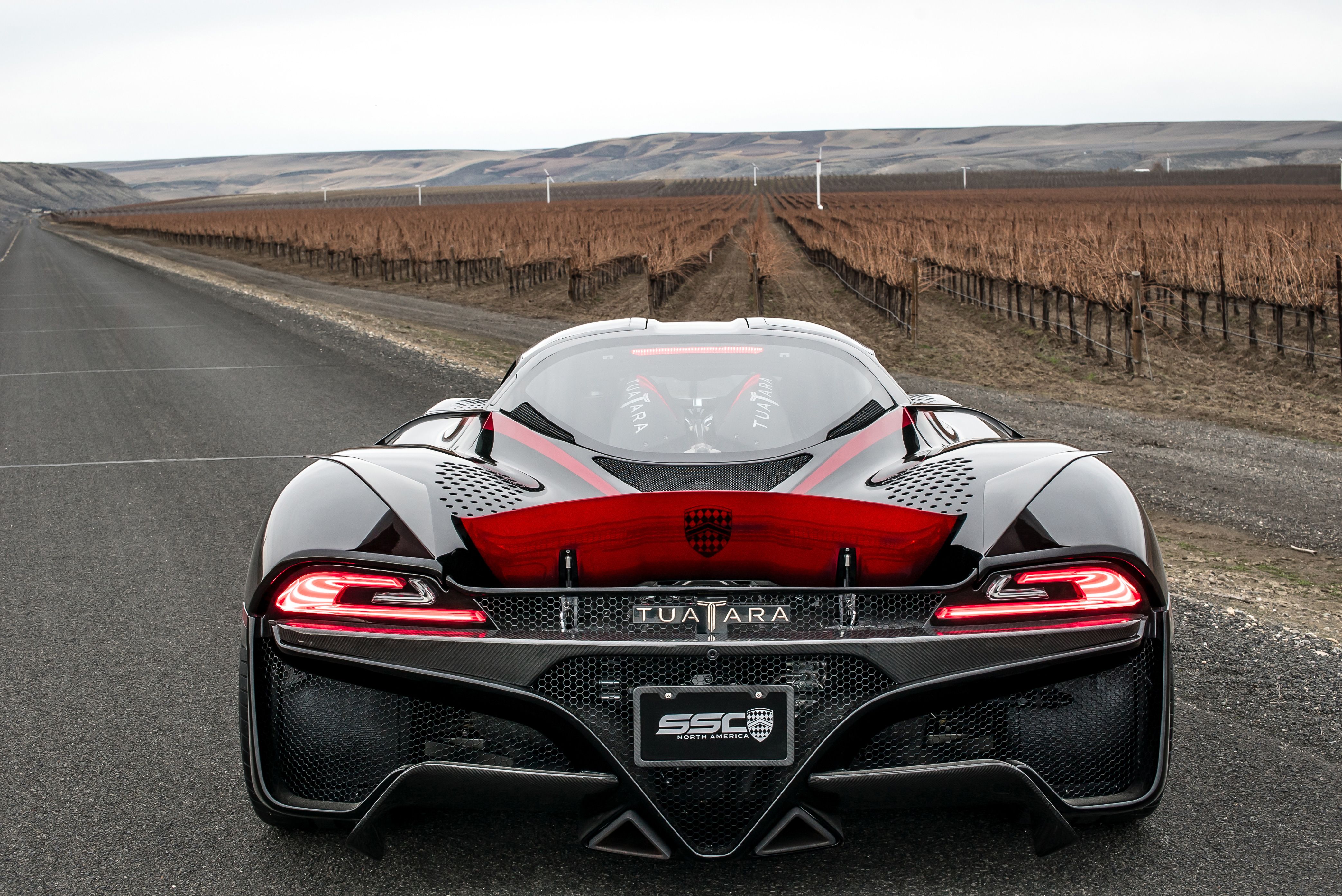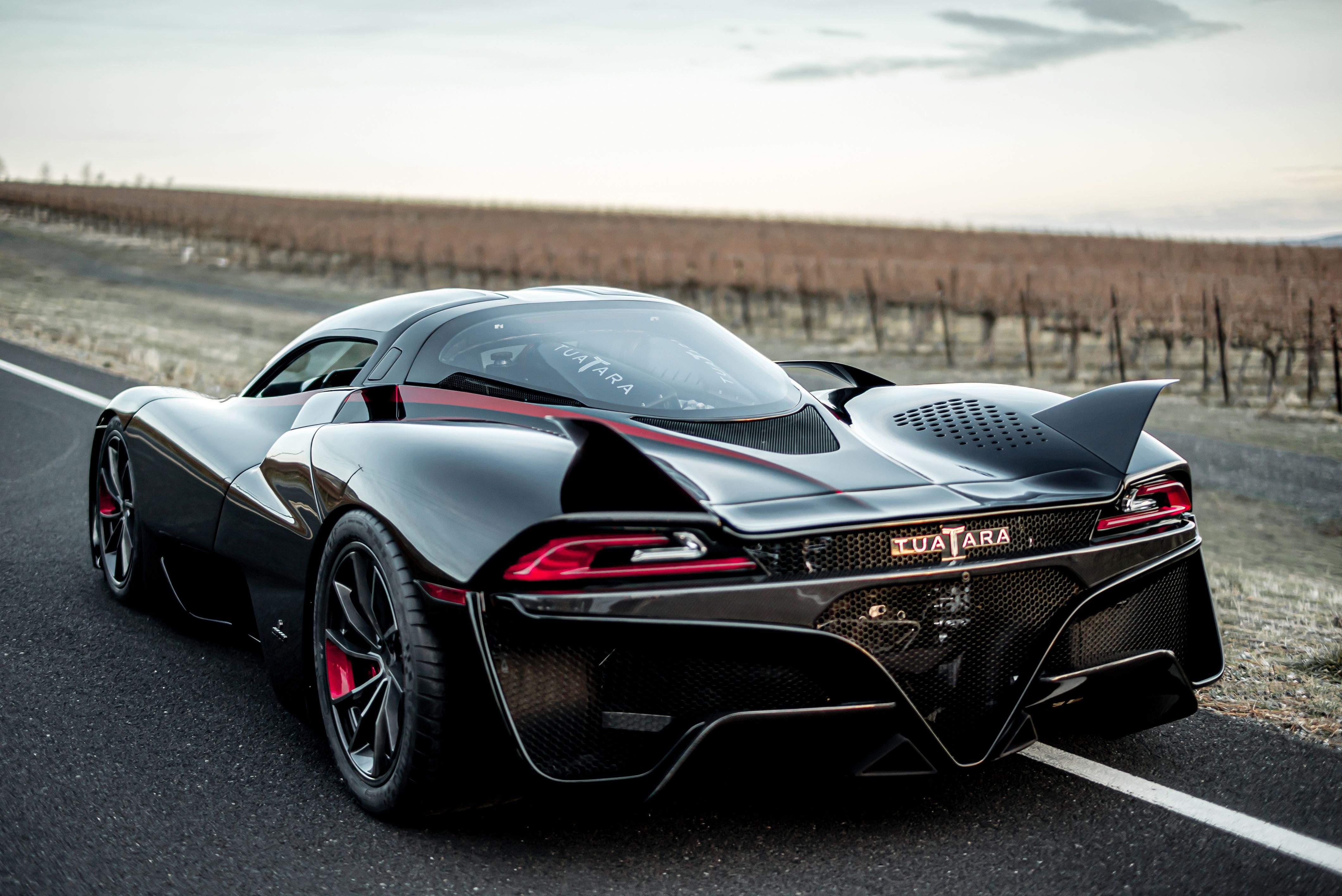The dust has barely settled on Nevada's Route 160 where SSC's latest hypercar, the Tuatara, reportedly broke the world speed record for a production car after reaching 331 mph on October 10th and the American automaker is set to return to the highway or a different stretch of road to do it all over again. As doubts mounted over the credibility of SSC's claims, CEO and Founder Jerod Shelby himself vowed to give it another go in a bid to clear his and the company's name following the "stained" record attempt.
SSC Boss Admits Skeptics Have a Point
On October 10th, we and the entire automotive press buzzed upon hearing that SSC (Shelby Super Cars) had done it again. 13 years after taking the world speed record for a production car away from Bugatti's stunning Veyron 16.4 with the Ultimate Aero TT, the small American automaker got up and pulled it off once more with the Tuatara. The difference this time, however, was that the margins were greater. The Tuatara, let loose on a closed-off bit of public road in the Nevada desert simply obliterated anything else to have come before it. Or so we all thought.
Moreover, with its two-way average of 316.11 mph (508.73 km/h) (the top speed on the first run was 301.07 mph or 484.53 km/h), the Tuatara also shattered the record held by Koenigsegg's Agera RS which averaged 277.9 mph (447.23 km/h) on the same road as the Tuatara back in 2017. Bugatti's Chiron Super Sport 300+ could only surpass 300 mph during one of its runs at Ehra-Lessien making SSC's achievement that much more incredible - not to mention that the Tuatara ran on not-so-exotic Michelin Pilot Sport Cup 2s tires.
That is, in short, what we reported less than two weeks ago and, admittedly, it felt a little too good to be true. We've known for years that Bugatti's main concern when it came down to a speed record run laid with the rubber, the thing that connects the car to the road surface. We also knew just how much Koenigsegg poured into its own 2017 run which is why SSC's run felt unusually easy. That's perhaps what others thought too as we began seeing well-known YouTubers including Shmee150 and Misha Charoudin post videos where they openly doubted that the SSC Tuatara really ran as fast as the company had claimed it did.
What really happened
We explained what was wrong with the footage and telemetry that SSC posted for the world to see in this article where we call for SSC to simply re-do the record attempt. In short, by comparing the data coming out of Koenigsegg's 2017 run and the footage we had from SSC, you could argue that the Tuatara was not only slower than the Bugatti Chiron Super Sport 300+ but also slower than the Agera RS as it seemed to cover the same seven-mile section of Route 160 at a somewhat similar pace. The YouTubers went on to conclude that the Tuatara hadn't gone quicker than 280 mph during the taped runs that were provided - during which the speedometer was blurred out.
On October 26th, 16 days after the record run was officially announced and promptly made headlines the world over, SSC released a statement saying that GPS systems from a well-regard manufacturer of professional test and data equipment, Dewetron, was used to measure the speeds during the runs and also record all of the data needed to legitimize what transpired on October 10th. A couple of days later, however, Dewetron's CEO, Christoph Wiedner released a statement on behalf of Dewetron saying that, in fact, "despite the information published on the website of SSC North America as well as on several related and non-related YouTube channels, Dewetron did not validate any data from world record attempts or preceding tests," and also adding that "nobody of Dewetron’s employees was present during the test drive or involved in the associated preparations and, therefore, we again want to highlight that Dewetron neither approved nor validated any test results."
What's awkward about Wiedner's statement is that it came at odds with what SSC said in a previous statement of its own where it was claimed that Dewetron had, in fact, verified the run alongside two independent observers, Brian Shoemake of Pahrump Life magazine and Nevada legislator Gregory Hafen II. Next, on October 28th, Jerod Shelby came forth to clarify matters and tell us how we ended up in this confusing situation.
"On October 19, the day the news broke, we thought there were two videos that had been released -- one from the cockpit, with data of the speed run overlaid, and another video of b-roll running footage. The cockpit video was shared with Top Gear, as well as on the SSC and Driven+ YouTube pages," said Shelby, adding that "somehow, there was a mixup on the editing side, and I regret to admit that the SSC team hadn’t double-checked the accuracy of the video before it was released. We also hadn’t realized that not one, but two different cockpit videos existed, and were shared with the world."
"At first glance, it appears that the videos released have differences in where the editors had overlaid the data logger (which displays speed), in relation to the car's location on the run. That variance in ‘sync points’ accounts for differing records of the run," Shelby pointed out. "While we had never intended for the video captured to play the role of legitimizing the run, we are regretful that the videos shared were not an accurate representation of what happened on October 10," SSC's CEO also said.
Shelby also told TopGear that "we became aware during testing the week leading up to the record attempt that the driver display was off by approximately 14-15mph at 200mph. We were not sure how inaccurate the display would be at 300mph and beyond and we had always planned on relying solely on the precision of the satellite data to record and display speed since we knew the driver display speed would not be as accurate at those speeds."
Even the Tuatara's driver, FIA World Endurance Championship regular Oliver-James Webb couldn't say whether or not the car really did reach 331 mph as you can see from a video he posted to his Instagram account although previously, he did say that the car seemed to surge effortlessly between 300 mph and 330 mph. Given all the controversy, SSC decided not to forward the record attempt to Guinness World Records.
What is more, on October 30th, Jerod Shelby took to SSC's YouTube to address all the parties concerned and said that his team will, indeed, do the record run all over again. Shelby said in the video that "the more we tried to analyze, the more we were concerned there were doubts in the relationship between the video and the GPS," adding that, "the perfect view I had of this record is now gone, and no matter what we do in the coming days to try and salvage this particular record, it’s going to have a stain on it."
As a result, SSC will do it again and "do it in a way that’s undeniable and irrefutable," by making sure that "every backstop in place" meaning "multiple GPS companies' equipment in the car," and, "their staff on-site looking over our shoulder analyzing every run, every detail." This refers to the fact that, on October 10th, Dewetron was supposed to have a man on site in Nevada, namely Steve DiPalma, the company's Chief Operations Officer, but, according to Motor Authority that spoke with Dewetron's Regional Sales Manager, complications stemming from the global COVID-19 pandemic saw SSC push on without any of Dewetron's people there to calibrate the equipment.
SSC, through Shelby's voice, also wants to have Shmee150, Robert Mitchell, and Misha Charoudin present during the upcoming record run so that they too can make sure (and see with their own eyes) that the Tuatara can actually do what the existing footage and GPS-provided telemetry failed to make us believe it can do. Charoudin, on his part, responded to Shelby's video by applauding his decision to come out and say he'll do one more attempt saying that "he didn't have to do it" and that he earns "massive respect" for deciding to go down this path.
We here at TopSpeed are also applauding Shelby's decision especially since the company said it had the data to back up the results recorded during the runs on October 10th. After all, it could've just taken said data to the Guinness World Records and if the experts over there agreed that the data was legitimate then the record stood - you don't need video footage of it to prove it, you simply need the hard figures that back it up.
But SSC wants to do it right and that's great considering that this is not the first time we've seen dodgy on-board recordings with GPS data overlays but it's probably the first time when a manufacturer goes back and plans another subsequent run amid controversy over the footage it has released. Let's hope others in the industry follow SSC's example and let's hope, obviously, that SSC plans its next few steps right and the Tuatara is able to go out there and blow everyone outta the water - even the doubters.


